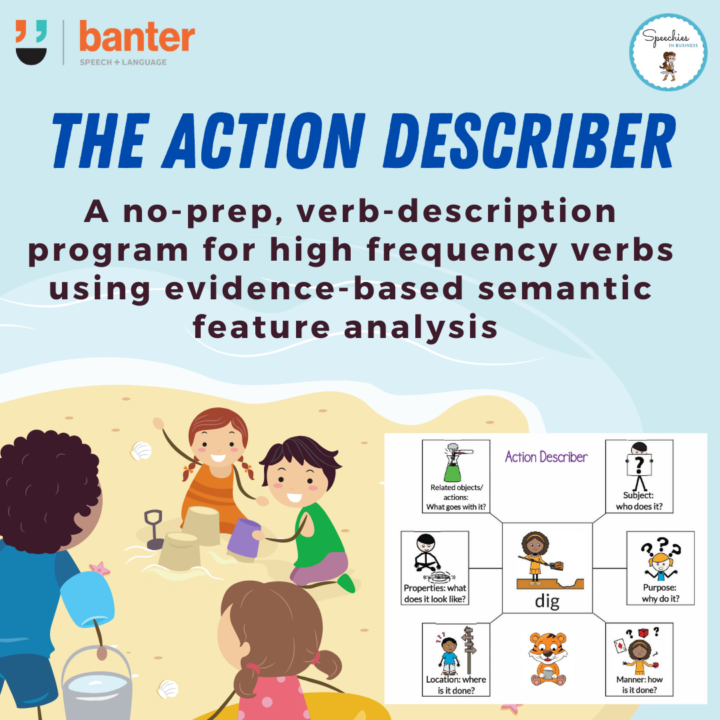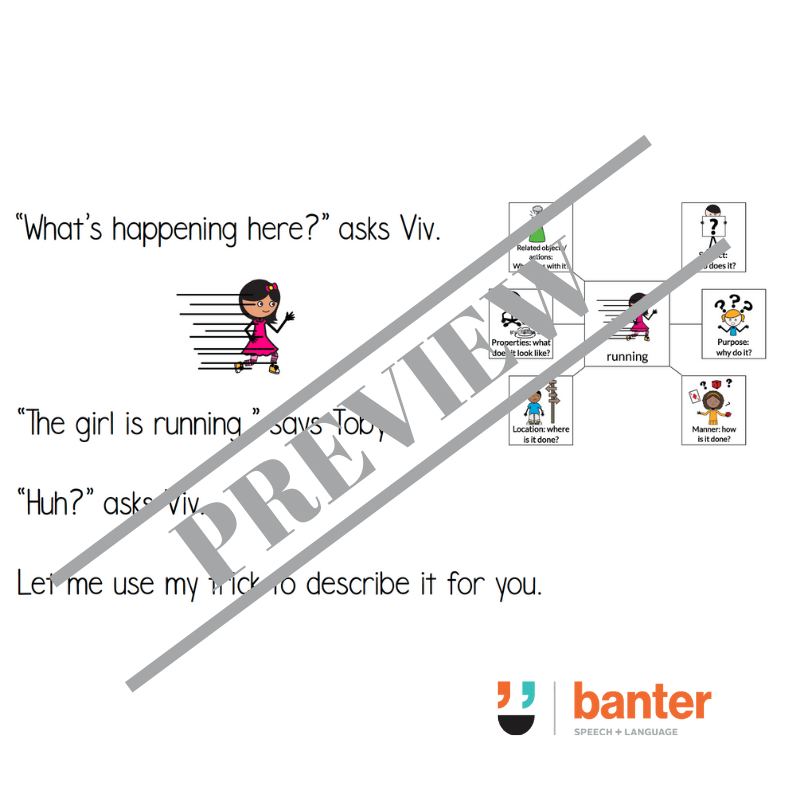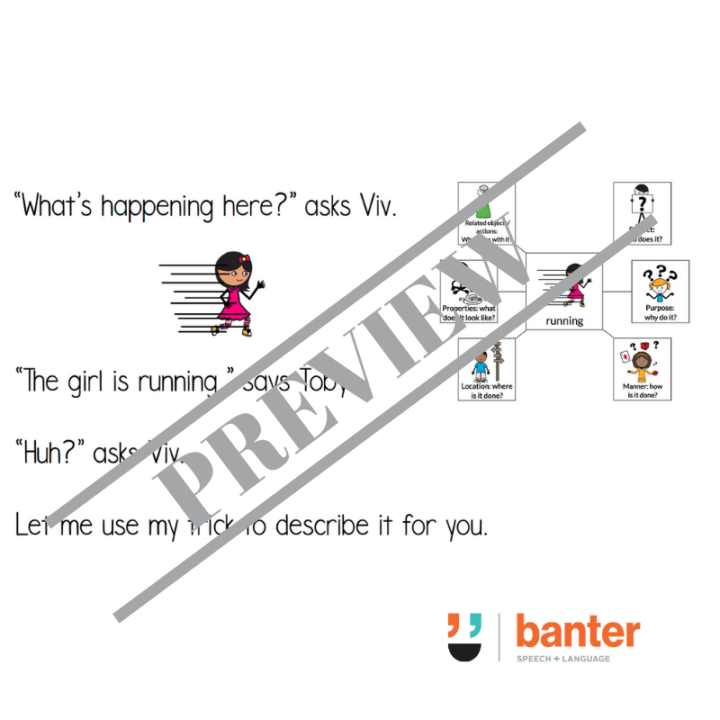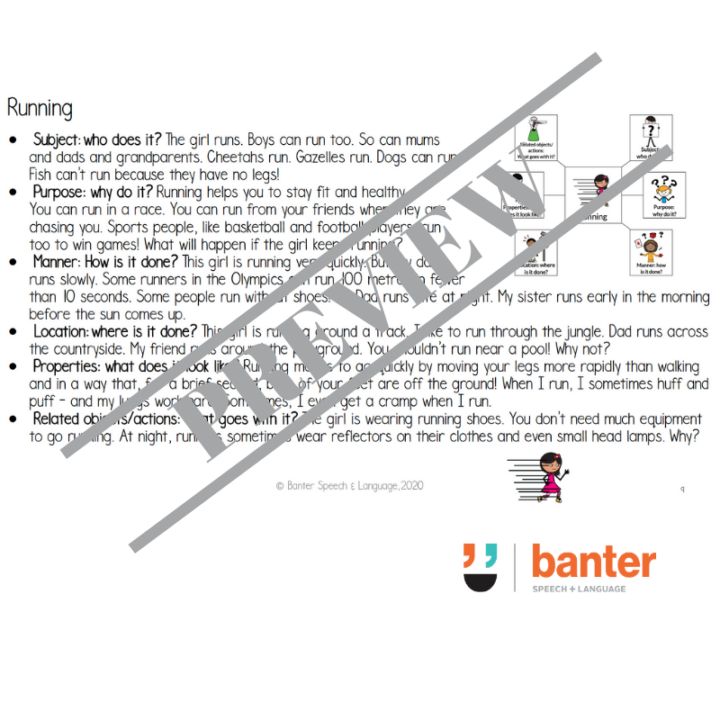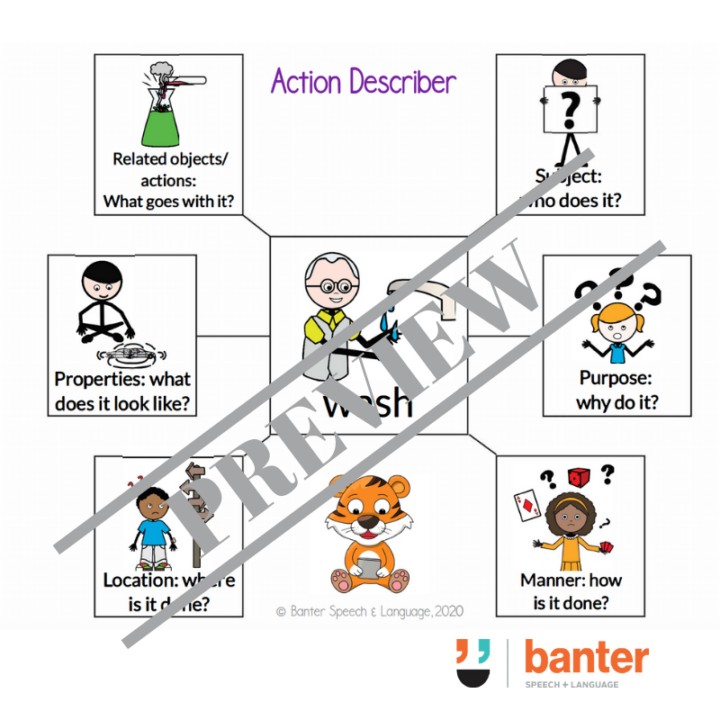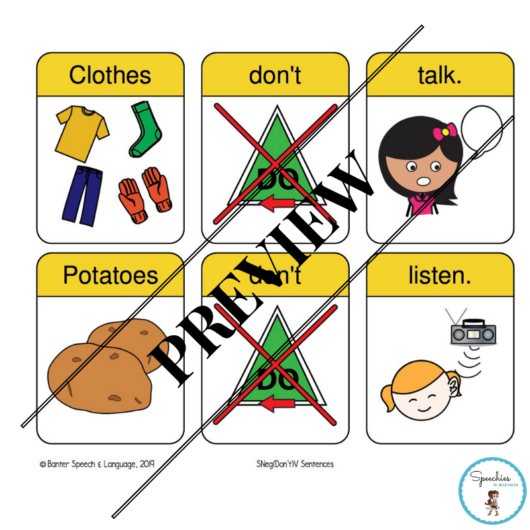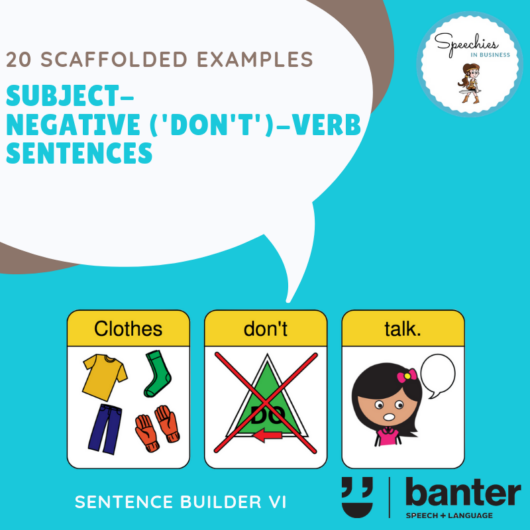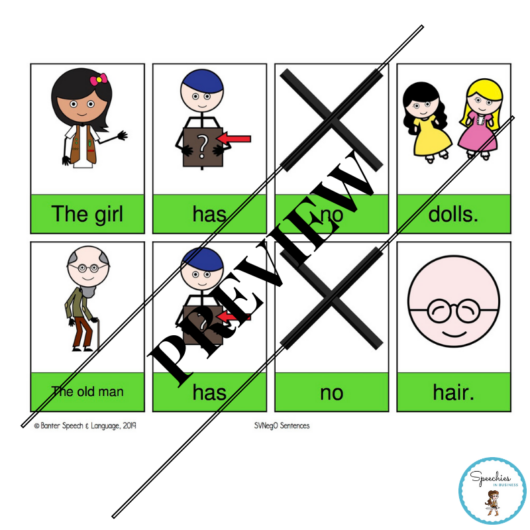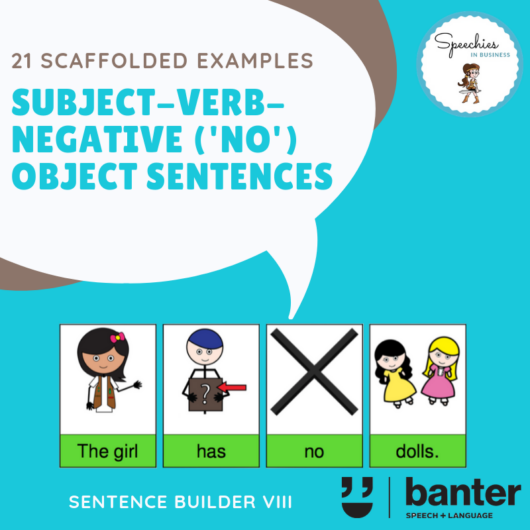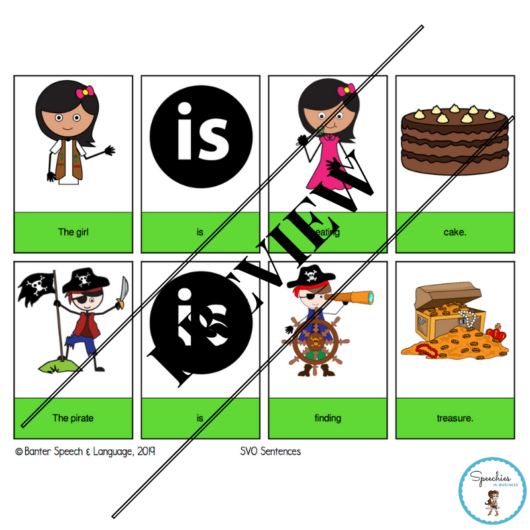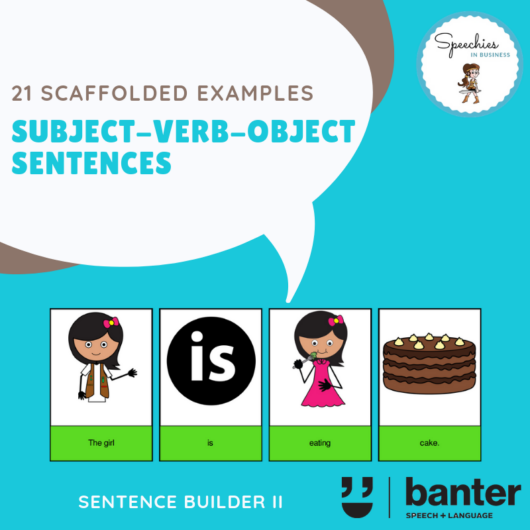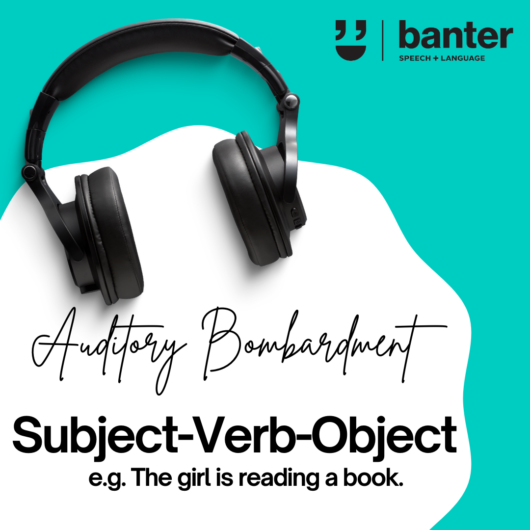Description
THE ACTION DESCRIBER: A no-prep, verb-description program for high frequency verbs using evidence-based semantic feature analysis with expressive language cues (aligned with Blank’s 3rd and 4th Levels of Questioning)
In the early years of school, we want students to learn to look beyond what they see and to rework their experiences using language. We all so want students to be able to connect language to events. One way to help children to do this is to teach students to describe events around them using specific verbs.
Why verbs?
Many describing tools focus on nouns. But verbs are arguably even more important than object names!
Children with only a few verbs in their vocabulary are at increased risk of language disorders (Olswang et al., 1998). Verbs are essential for many word combinations and all sentences. Knowledge and use of different kinds of verbs may help kick-start grammatical development (e.g. Tomasello, 2005). Researchers talk about verbs having a ‘privileged’ role in sentence production (e.g. Bock & Levelt, 1994).
You can read more about the importance of verbs here.
Why Semantic feature analysis (SFA)?
Describing nouns or verbs by key attributes – SFA – is an evidence-based strategy to learn new vocabulary and retain word meanings. It can deepen students’ understanding of words they already know. The strategy can also help children with word-finding or other language or learning difficulties, e.g. by giving them a way of describing what they mean when they can’t find the word.
Using SFA for verb acquisition and sentence development
This no-preparation pack is designed to help students of all abilities to learn and apply the strategy of semantic feature analysis to verbs. To make it accessible to all students, we have chosen high frequency verbs. We have selected six key attributes that researchers and speech pathologists have found clinically to be of the greatest use in learning and recalling verbs (e.g. Wambaugh et al., 2014), namely:
- Subject: Who does it?
- Purpose: Why do it?
- Manner: How is it done?
- Location: Where is it done?
- Properties: What does it look like?
- Related objects/actions: What goes with it?
With a fully scripted introduction that models how to use the resource, a colourful scaffold, and 30 examples, this pack is designed to give students plenty of structured practice describing high frequency verbs in isolation and in sentences. Once completed, students can use the scaffold to describe any action they see – even if they have yet to learn the verb.
For students with language and other learning disorders, the scaffolds can be used to increase vocabulary or verbs, to work on verb tenses (e.g. by changing the initial question to ‘What happened?’), and to practice making simple, compound and complex sentences. We have included models for these in the scripted first section of the resource.
For advanced students, this resource can be used for verbal reasoning tasks (like answering negative questions (e.g. ‘Why shouldn’t you run with scissors?’), describing cause/effect relationships (e.g. ‘Why does running make you fit?’), sequencing and predicting (‘What do you think will happen in the running race?’) to creating simple recounts from personal experiences and narratives. We’ve included models of some these types of tasks, too.
For older students, this approach can be adapted to include higher-level curriculum specific academic verbs (like ‘explain’, ‘evaluate’ and ‘discuss’). You can read more about these verbs here.
For more information and free resources about vocabulary support and instruction, check out our article here.
For more semantic feature analysis, check out our:
